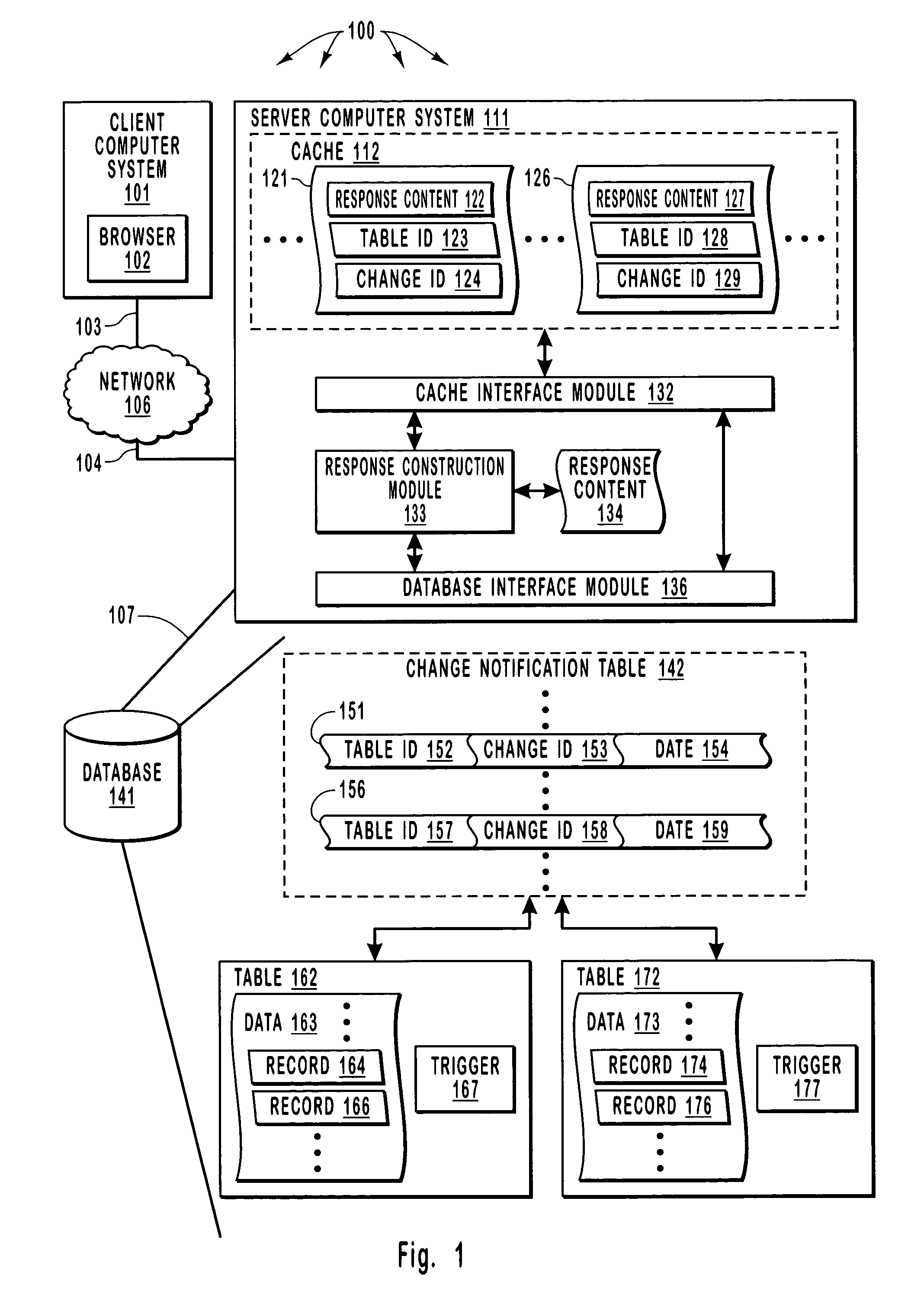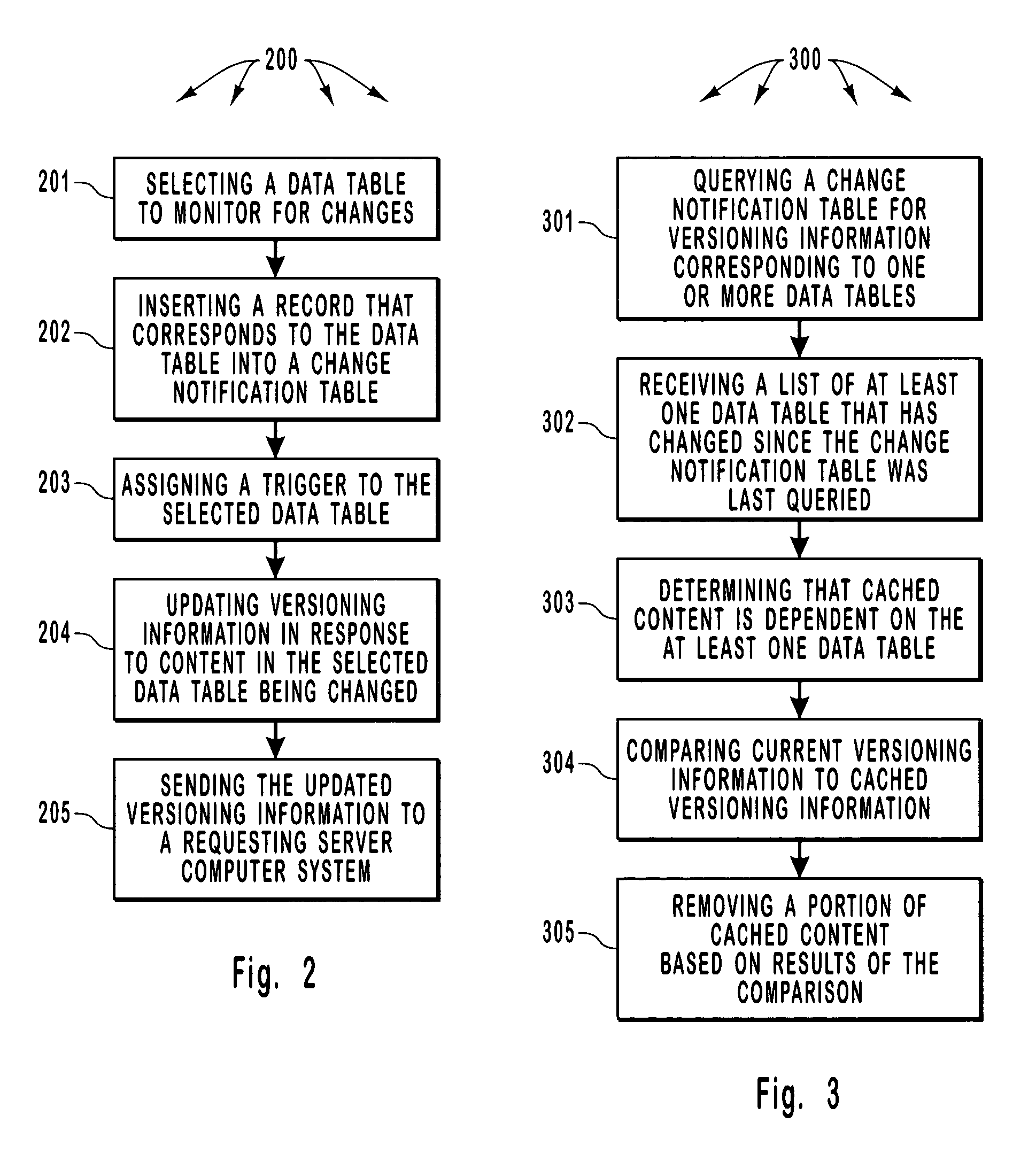Registering for and retrieving database table change information that can be used to invalidate cache entries
a database table and change information technology, applied in the field of managing cached content, can solve the problems of static web pages being cached, preventing real-time or custom data from being presented by a web browser, and invalidating cached dynamic content, so as to increase the efficiency of subsequently
- Summary
- Abstract
- Description
- Claims
- Application Information
AI Technical Summary
Benefits of technology
Problems solved by technology
Method used
Image
Examples
Embodiment Construction
[0033]The present invention extends to methods, systems, computer program products, and data structures for registering for and retrieving database table change information that can be used to invalidate cache entries. A client computer system with a browser is network connectable to server computer system that can generate and provide Web responses (e.g., Web page and / or results from Web services) to the client computer system. The server computer system accesses at least some of the content for Web responses from data tables in a database. The server computer system maintains a cache (e.g., in system memory) that can store provided content (including content from data tables) so as to increase the efficiency of subsequently providing the same content to satisfy client Web requests.
[0034]The server computer system (e.g., in response to user input) configures a data table in the database to provide a change notification table with updated versioning information (e.g., change IDs) wh...
PUM
 Login to View More
Login to View More Abstract
Description
Claims
Application Information
 Login to View More
Login to View More - R&D
- Intellectual Property
- Life Sciences
- Materials
- Tech Scout
- Unparalleled Data Quality
- Higher Quality Content
- 60% Fewer Hallucinations
Browse by: Latest US Patents, China's latest patents, Technical Efficacy Thesaurus, Application Domain, Technology Topic, Popular Technical Reports.
© 2025 PatSnap. All rights reserved.Legal|Privacy policy|Modern Slavery Act Transparency Statement|Sitemap|About US| Contact US: help@patsnap.com



